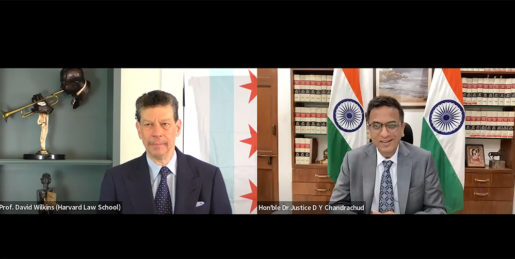As we release an issue focused on judicial decision making, another sort of judicial decision with consequential implications is playing out on the national stage. On February 22, 2022, President Joe Biden nominated Ketanji Brown Jackson to the U.S. Supreme Court. A new Supreme Court justice is always a history-making event. This particular process holds special resonance because Judge Jackson, who at the time of writing, is currently a judge on the U.S. Circuit of Appeals for the D.C. Circuit, is the first Black woman to even receive a nomination—as reported by Pew Research, fewer than 2 percent of the individuals who have served as federal judges have been Black women.
Before Judge Jackson can take the bench, she faces a contentious confirmation process. (Political science studies have shown that women and nonwhite candidates face different treatment before congressional bodies than their male white counterparts.) Among the topics senators chose to focus on in last week’s hearings was Judge Jackson’s approach to decision making, especially her history of sentencing on particular controversial topics, like child pornography offenses.
Sentencing is an interesting aspect of judicial decision making—federal guidelines, mandatory minimums, prosecutor recommendations, probationary reports, and even victim statements may all act as factors. But, as the recent hearings have illustrated, judges also enjoy a fair amount of discretion in balancing these factors and ultimately making a decision. During the course of questioning, some senators suggested that Judge Jackson had been too lenient toward sex offenders. For instance, as the New York Times noted, “[Ted] Cruz said the sentences imposed by Judge Jackson in cases involving images of child sex abuse were 47.2 percent less than the prosecutor’s recommendations on average.” At the same time, other statistics illustrated that Judge Jackson’s sentencing was not unusual. The same Times article noted,
Just 30 percent of offenders who possessed or shared images of child sex abuse received a sentence within the range suggested by nonbinding federal guidelines in the 2019 fiscal year, and 59 percent received a sentence below the guideline range. And in general, it is not uncommon for judges to impose shorter sentences than what prosecutors have recommended.
Further the bipartisan U.S. Sentencing Commission, which provides recommendations to Congress, submitted a 2012 report that said “existing sentencing guidelines on crimes involving images of child sexual abuse ‘fail to differentiate among offenders in terms of their culpability’ and result in penalty ranges that ‘are too severe for some offenders and too lenient for other offenders,’” the New York Times reported in their confirmation hearings fact-check. Or as Judge Jackson put it when questioned, the numbers often miss the context. Understanding judicial decision making—like all decision making—is complicated, but not impossible. It’s a “decision science” that can be studied.
See also:
- “Black women account for a small fraction of the federal judges who have served to date,” Pew Research, Feb. 4, 2022
- “How Racism And Sexism Could Define Ketanji Brown Jackson’s Confirmation Hearings,” Five Thirty Eight, Mar. 2, 2022
- “Attacks on Judge Jackson’s Record on Child Sexual Abuse Cases Are Misleading,” New York Times, Mar. 21, 2022



